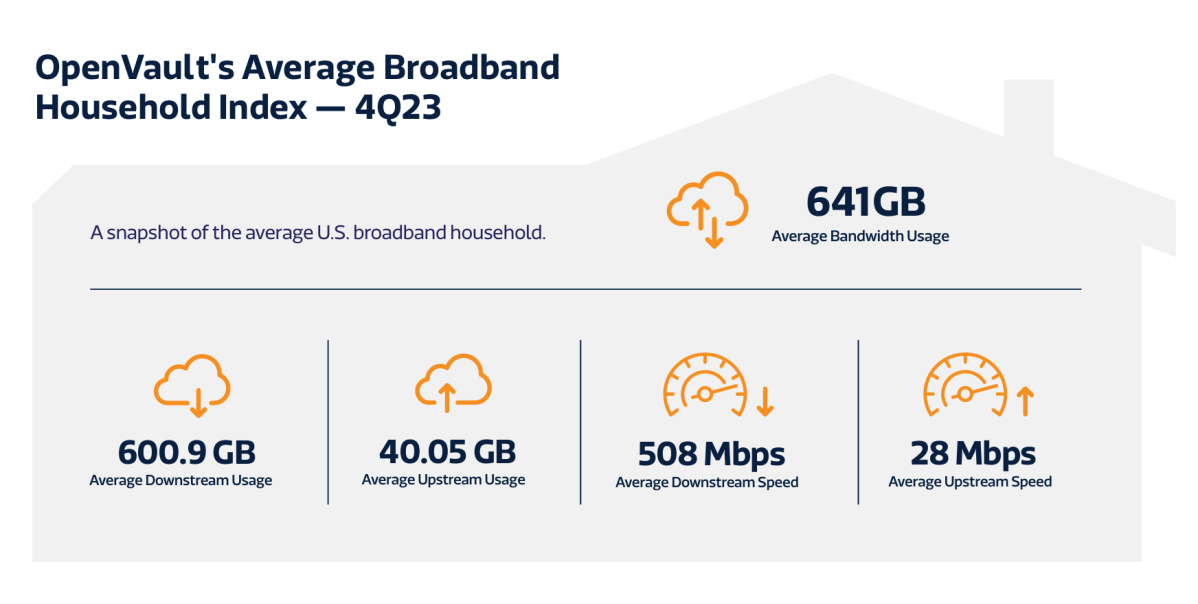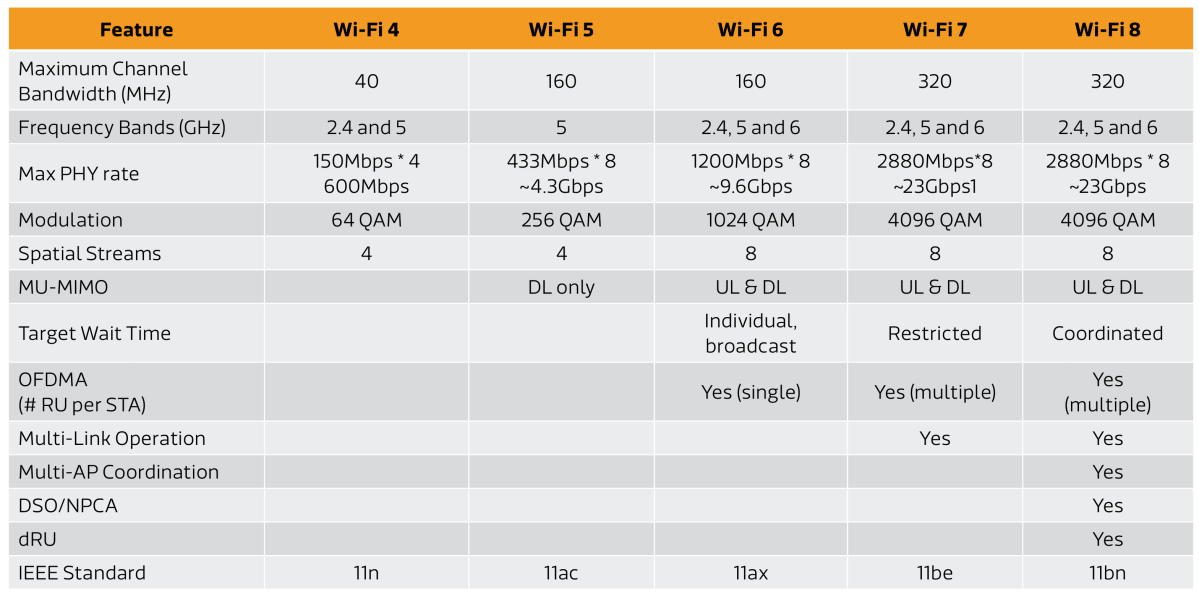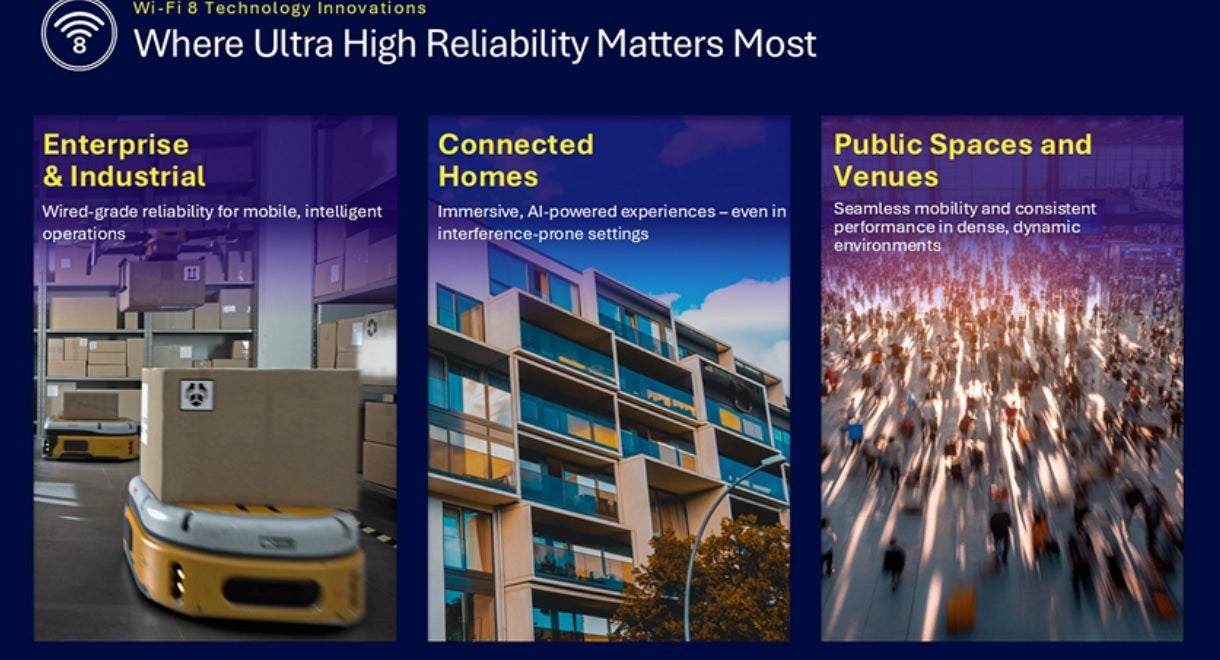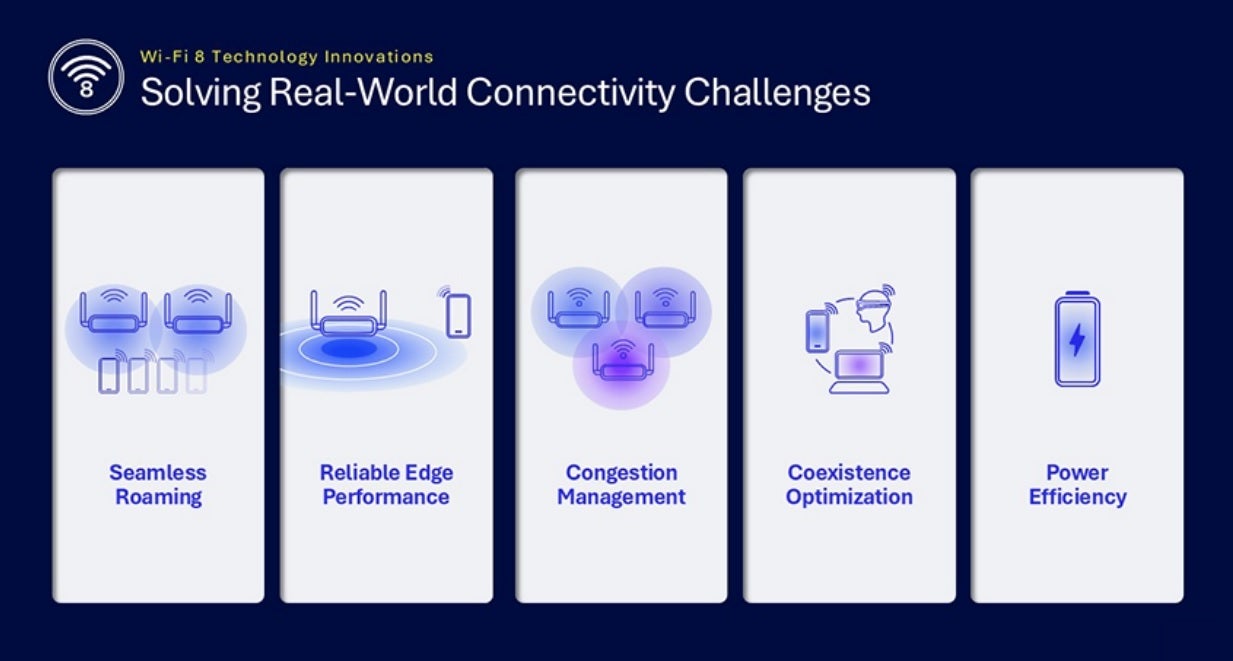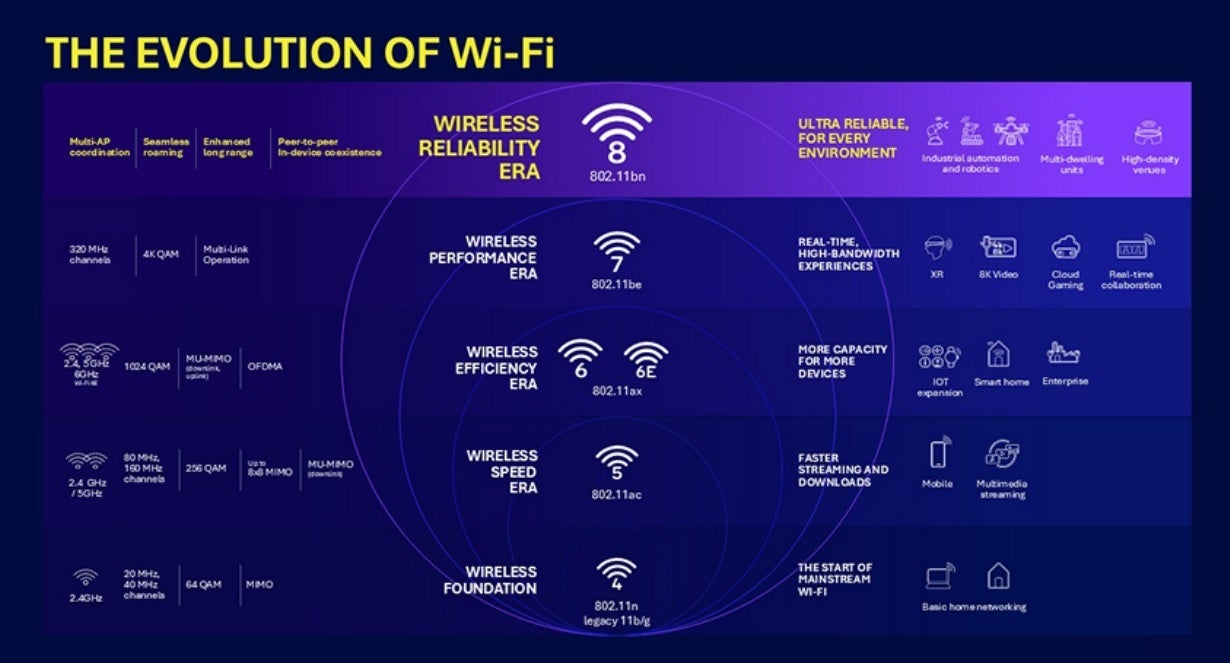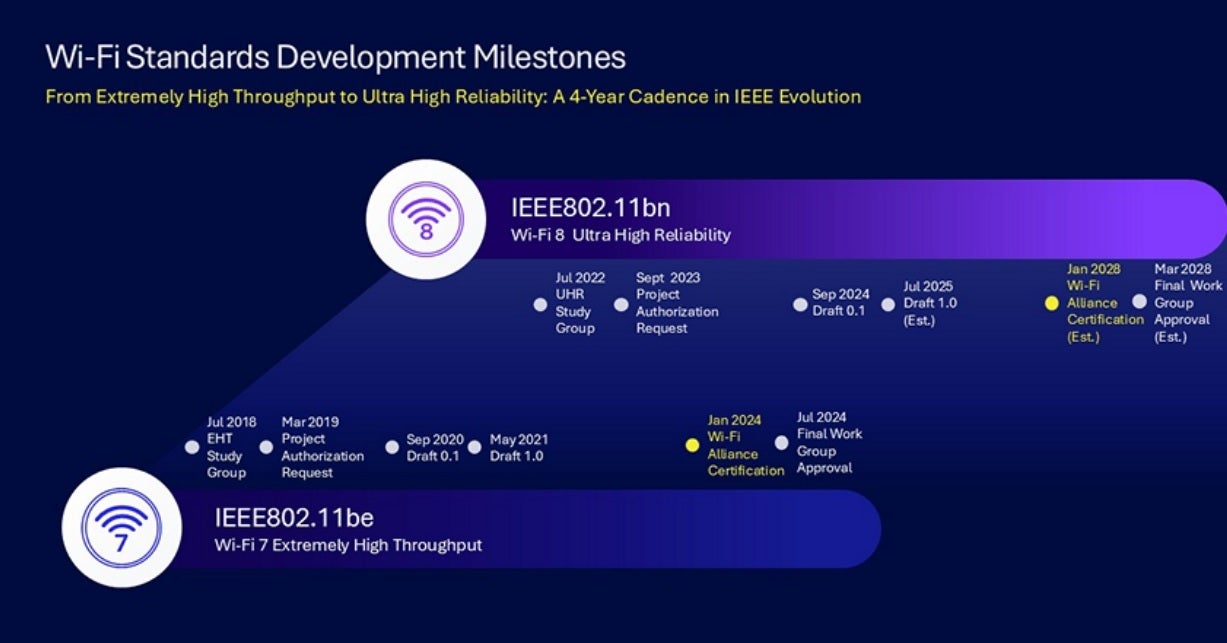- Joined
- Jul 5, 2001
- Messages
- 36,767
- Reaction score
- 7,679
WiFi 8 is coming
The next generation of Wi-Fi, Wi-Fi 8, is currently under development in secret. This time, the focus is no longer on pure speed, but on improving the user experience.
The next generation of Wi-Fi, Wi-Fi 8, is currently under development in secret. This time, the focus is no longer on pure speed, but on improving the user experience.
Wi-Fi 8 (currently known as the IEEE 802.11bn Ultra-Reliability standard) is still years away. Wireless technology is in a constant state of improvement: Each advancement in Wi-Fi’s evolution takes years to be discussed, approved, and deployed. Wi-Fi 7 (the current standard) hasn’t even been officially ratified yet.
But that hasn’t stopped Wi-Fi 8 from being developed behind the scenes, and we already know some details. MediaTek recently released some of the details you can expect, but it’s important to note that the final details won’t be determined until the final specification is released around September 2028.
What's the key word you should think of in the context of Wi-Fi 8? Not peak throughput, but effective throughput.
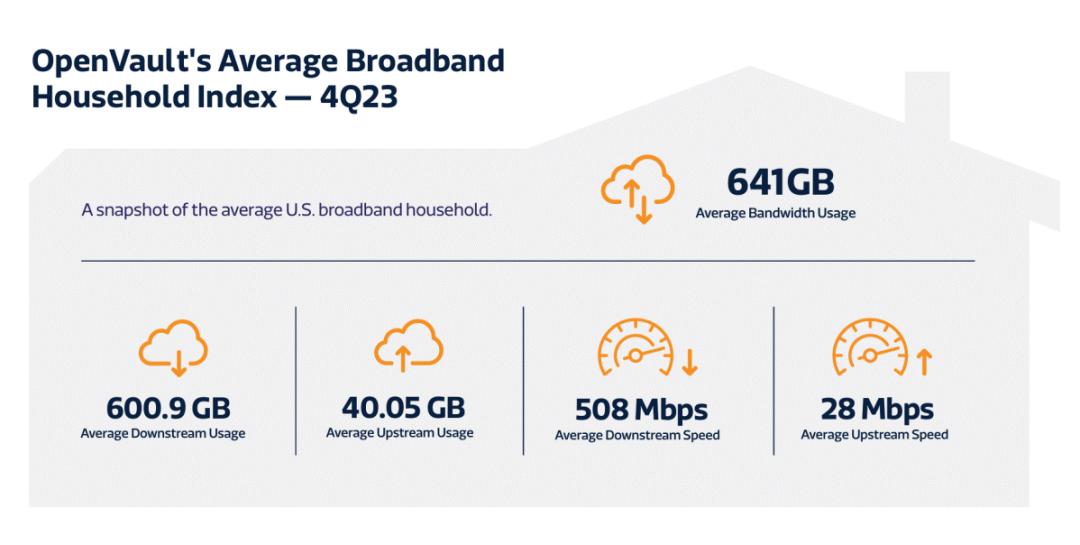
In theory, 802.11bn / Wi-Fi 8 is designed to provide enough wireless bandwidth to accommodate broadband gateways that deliver several gigabits per second, and given Ethernet's ability to deliver even more bandwidth, EverythingRF interprets the 2022 document, known as a Project Authorization Request (PAR), as providing a minimum aggregate throughput of 100Gbps.
Since then, PAR was approved in 2023 and the working group has begun finalizing more details. As of November 2024, MediaTek believes that Wi-Fi 8 will be almost identical to Wi-Fi 7 in several key areas: The maximum physical layer (PHY) rate will be the same, at 2,880Mbps x 8, or 23Gbits/s. It will also use the same three frequency bands (2.4, 5, and 6GHz) and the same 4096 QAM modulation, with a maximum channel bandwidth of 320MHz.
Of course, Wi-Fi 8 routers aren’t going to get 23Gbps of bandwidth. According to MediaTek, actual peak throughput in a “clean” or lab environment is only about 80% of the assumed peak throughput, and actual real-world results are likely to be much lower.

In simple terms, though, Wi-Fi 8 should be able to provide the same wireless bandwidth as Wi-Fi 7, using the same channels and modulation. Each Wi-Fi standard is also backwards compatible with its predecessor. What Wi-Fi 8 does, however, is change the way client devices (such as PCs or phones) interact with multiple access points.
Think of it as the evolution of how your laptop communicates with your home networking equipment. Over time, Wi-Fi has evolved from communicating between one laptop and a router, over a single channel. Channel hopping routes different clients to different frequency bands. When Wi-Fi 6 was developed, dedicated 6GHz channels were added, sometimes as a dedicated "backhaul" between home access points. Now, mesh networks are more common, giving your laptop a variety of access points, channels, and frequencies to choose from.
1. Coordinated Spatial Reuse (Co-SR):
This technology was first implemented as spatial reuse in Wi-Fi 6. The problem occurs when there is a difference in transmit power when an access point is "talking" to a nearby device and communicating with a second access point farther away at the same time. If the first access point lowers its power to communicate with the nearby device, the access point cannot "hear" it.
MediaTek says Wi-Fi 8’s Co-SR is a “mature” version of spatial reuse technology that will solve the problem by allowing access points to communicate with each other and coordinate their power output. “Our initial trials show that Co-SR can increase overall system throughput by 15% to 25%,” MediaTek said.
2. Coordinated Beamforming (Co-BF):
There is a trend now: taking early Wi-Fi technology and extending it to multiple access points. Spatial Nulling is a feature introduced in 802.11ac (Wi-Fi 5) that allows a router to essentially stop sending signals in certain directions. By doing so, the router sends the signal to the requested location and avoids interfering with devices that don't want to communicate with the router.
The technology seeks to solve a fairly common problem in a connected home or public Wi-Fi location: two devices in close proximity to each other. Coordinated beamforming allows access points to communicate with each other, determine which device needs a signal and which doesn’t, and adjust the mesh access point to “steer” the signal away from devices that aren’t communicating with the network, i.e. denying transmission to their area.
联发科表示:“下一代联发科 Filogic 中协调波束成形 (Co-BF) 提供的吞吐量得到显著增强,在具有一个控制 AP 和一个代理 AP 的网状网络设置中,吞吐量增幅从 20% 到 50% 不等。”
3. Dynamic sub-channel operation:
You probably know that the latest devices support the latest wireless standards, such as Wi-Fi 7. But some devices may also have additional or improved Wi-Fi antennas, allowing for higher throughput. In the past, this information would be passed to the router and stored there.
In most cases, this isn’t a problem. But in situations where multiple different devices are downloading the same file, DSO will create a dynamic scenario where the more advanced device will get a subchannel to download the file faster. The difference between the old approach and Wi-Fi 8’s DSO is that the access point will be able to make the decision, “learn” the capabilities of each device and its requirements, and route the data accordingly.
MediaTek believes that DSO can increase data throughput by 80% compared to without the technology.
4. New data rates:
You may not know what the MCS index is, which is the modulation coding scheme for Wi-Fi. It's basically a table that helps your Wi-Fi router determine the link speed so that you can actually connect and transmit data without errors. If your throughput is slow as you move around your home, this is partially due to your devices and the router "deciding" what connection speed your devices should transmit data at.
MediaTek argues that the problem is that the "stepped" rate reductions are too far-reaching, and that additional gradations should be introduced, such as 16-QAM at 2/3 code rate. The idea is not to introduce dramatic drops and increases in throughput as you move your phone or laptop around your home, but rather to introduce smaller increments. Again, MediaTek argues that these finer MCS divisions can increase overall transmission rates by 5% to 30%.

Wireless standards take about six years to develop — and impatient hardware makers rarely wait. As MediaTek points out, Wi-Fi 7 products have been shipping since late 2023, even though the standard hasn’t been formally ratified. That’s partly because the IEEE committee in charge of the standard rarely makes major changes between draft standard approval and the final standard. For Wi-Fi 8, the first products are expected to hit the market in early 2028, even though final approval should be completed by the end of that year.
However, it’s worth noting that in two different areas of the PC market, the race to ever-increasing speeds has been put on hold for now. Qualcomm and Intel’s CPUs have slowed down their pace of increasing clock speeds in favor of lower power consumption. For Wi-Fi 8, the focus now appears to be on improving the overall user experience first.
Reference Links
https://www.pcworld.com/article/251...ade-speed-for-a-more-reliable-experience.html
This article comes from the WeChat public account "Semiconductor Industry Observer" (ID: icbank) , author: Mark Hachman, and is authorized to be published by 36Kr.
// 36kr
The next generation of Wi-Fi, Wi-Fi 8, is currently under development in secret. This time, the focus is no longer on pure speed, but on improving the user experience.
The next generation of Wi-Fi, Wi-Fi 8, is currently under development in secret. This time, the focus is no longer on pure speed, but on improving the user experience.
Wi-Fi 8 (currently known as the IEEE 802.11bn Ultra-Reliability standard) is still years away. Wireless technology is in a constant state of improvement: Each advancement in Wi-Fi’s evolution takes years to be discussed, approved, and deployed. Wi-Fi 7 (the current standard) hasn’t even been officially ratified yet.
But that hasn’t stopped Wi-Fi 8 from being developed behind the scenes, and we already know some details. MediaTek recently released some of the details you can expect, but it’s important to note that the final details won’t be determined until the final specification is released around September 2028.
What's the key word you should think of in the context of Wi-Fi 8? Not peak throughput, but effective throughput.
Wi-Fi 8 is very similar to Wi-Fi 7
According to the Wi-Fi Alliance and MediaTek, it is China, not the United States, that is driving the development of wireless technology: China has 650 million broadband users, and more than a quarter of them have a 1Gbps broadband connection at home. Overall, the average connection speed is 487.6Mbps, an increase of 18% in one year.
In theory, 802.11bn / Wi-Fi 8 is designed to provide enough wireless bandwidth to accommodate broadband gateways that deliver several gigabits per second, and given Ethernet's ability to deliver even more bandwidth, EverythingRF interprets the 2022 document, known as a Project Authorization Request (PAR), as providing a minimum aggregate throughput of 100Gbps.
Since then, PAR was approved in 2023 and the working group has begun finalizing more details. As of November 2024, MediaTek believes that Wi-Fi 8 will be almost identical to Wi-Fi 7 in several key areas: The maximum physical layer (PHY) rate will be the same, at 2,880Mbps x 8, or 23Gbits/s. It will also use the same three frequency bands (2.4, 5, and 6GHz) and the same 4096 QAM modulation, with a maximum channel bandwidth of 320MHz.
Of course, Wi-Fi 8 routers aren’t going to get 23Gbps of bandwidth. According to MediaTek, actual peak throughput in a “clean” or lab environment is only about 80% of the assumed peak throughput, and actual real-world results are likely to be much lower.

In simple terms, though, Wi-Fi 8 should be able to provide the same wireless bandwidth as Wi-Fi 7, using the same channels and modulation. Each Wi-Fi standard is also backwards compatible with its predecessor. What Wi-Fi 8 does, however, is change the way client devices (such as PCs or phones) interact with multiple access points.
Think of it as the evolution of how your laptop communicates with your home networking equipment. Over time, Wi-Fi has evolved from communicating between one laptop and a router, over a single channel. Channel hopping routes different clients to different frequency bands. When Wi-Fi 6 was developed, dedicated 6GHz channels were added, sometimes as a dedicated "backhaul" between home access points. Now, mesh networks are more common, giving your laptop a variety of access points, channels, and frequencies to choose from.
How Wi-Fi 8 will improve Wi-Fi technology
MediaTek sees several opportunities to improve coordination between access points and devices. (To be fair, we consider these MediaTek efforts only because we can’t be sure they will ultimately be approved by the 802.11bn working group for Wi-Fi 8 as a whole.)1. Coordinated Spatial Reuse (Co-SR):
This technology was first implemented as spatial reuse in Wi-Fi 6. The problem occurs when there is a difference in transmit power when an access point is "talking" to a nearby device and communicating with a second access point farther away at the same time. If the first access point lowers its power to communicate with the nearby device, the access point cannot "hear" it.
MediaTek says Wi-Fi 8’s Co-SR is a “mature” version of spatial reuse technology that will solve the problem by allowing access points to communicate with each other and coordinate their power output. “Our initial trials show that Co-SR can increase overall system throughput by 15% to 25%,” MediaTek said.
2. Coordinated Beamforming (Co-BF):
There is a trend now: taking early Wi-Fi technology and extending it to multiple access points. Spatial Nulling is a feature introduced in 802.11ac (Wi-Fi 5) that allows a router to essentially stop sending signals in certain directions. By doing so, the router sends the signal to the requested location and avoids interfering with devices that don't want to communicate with the router.
The technology seeks to solve a fairly common problem in a connected home or public Wi-Fi location: two devices in close proximity to each other. Coordinated beamforming allows access points to communicate with each other, determine which device needs a signal and which doesn’t, and adjust the mesh access point to “steer” the signal away from devices that aren’t communicating with the network, i.e. denying transmission to their area.
联发科表示:“下一代联发科 Filogic 中协调波束成形 (Co-BF) 提供的吞吐量得到显著增强,在具有一个控制 AP 和一个代理 AP 的网状网络设置中,吞吐量增幅从 20% 到 50% 不等。”
3. Dynamic sub-channel operation:
You probably know that the latest devices support the latest wireless standards, such as Wi-Fi 7. But some devices may also have additional or improved Wi-Fi antennas, allowing for higher throughput. In the past, this information would be passed to the router and stored there.
In most cases, this isn’t a problem. But in situations where multiple different devices are downloading the same file, DSO will create a dynamic scenario where the more advanced device will get a subchannel to download the file faster. The difference between the old approach and Wi-Fi 8’s DSO is that the access point will be able to make the decision, “learn” the capabilities of each device and its requirements, and route the data accordingly.
MediaTek believes that DSO can increase data throughput by 80% compared to without the technology.
4. New data rates:
You may not know what the MCS index is, which is the modulation coding scheme for Wi-Fi. It's basically a table that helps your Wi-Fi router determine the link speed so that you can actually connect and transmit data without errors. If your throughput is slow as you move around your home, this is partially due to your devices and the router "deciding" what connection speed your devices should transmit data at.
MediaTek argues that the problem is that the "stepped" rate reductions are too far-reaching, and that additional gradations should be introduced, such as 16-QAM at 2/3 code rate. The idea is not to introduce dramatic drops and increases in throughput as you move your phone or laptop around your home, but rather to introduce smaller increments. Again, MediaTek argues that these finer MCS divisions can increase overall transmission rates by 5% to 30%.
Change of pace
Likewise, the evolution of Wi-Fi 8 depends on how quickly the standard moves through the regulatory process. Wi-Fi 7 (802.11be) was expected to be approved in September this year, but has not yet been approved. Sony's PlayStation 5 may not be approved in India because the country has not yet approved the 6GHz wireless channels that the Wi-Fi 7 standard relies on. This will also hinder the promotion of Wi-Fi 8.
Wireless standards take about six years to develop — and impatient hardware makers rarely wait. As MediaTek points out, Wi-Fi 7 products have been shipping since late 2023, even though the standard hasn’t been formally ratified. That’s partly because the IEEE committee in charge of the standard rarely makes major changes between draft standard approval and the final standard. For Wi-Fi 8, the first products are expected to hit the market in early 2028, even though final approval should be completed by the end of that year.
However, it’s worth noting that in two different areas of the PC market, the race to ever-increasing speeds has been put on hold for now. Qualcomm and Intel’s CPUs have slowed down their pace of increasing clock speeds in favor of lower power consumption. For Wi-Fi 8, the focus now appears to be on improving the overall user experience first.
Reference Links
https://www.pcworld.com/article/251...ade-speed-for-a-more-reliable-experience.html
This article comes from the WeChat public account "Semiconductor Industry Observer" (ID: icbank) , author: Mark Hachman, and is authorized to be published by 36Kr.
// 36kr


